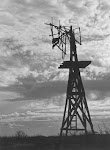52 Ancestors in 52 Weeks - Week #22 Theme - Conflict
My husband is a history buff. While I
research the history of both our families, he catches me up on
what was happening in those years and locations. Often we then
take trips to the areas where family lived and learn more about
them at history centers and libraries. When we traveled through
Alabama and Mississippi, we found that his paternal 3Gt.
Grandfather, John Oliver Davis, a merchant from Tallapoosa Co,
Alabama, had fought with the 37th Infantry at the second Battle
of Corinth, Mississippi, Oct. 3-4 1862. He had been elected
First Lieutenant following the organization of the 37th
Regiment, but had been promoted to Captain in the ensuing
months. At the 2nd Battle of Corinth, Captain Davis, age 40,
was wounded, seriously enough that he returned home and then
resigned from service. His daughter, Martha Lavonia (Vonie)
Davis married Alonzo C. Bosworth, a young Confederate soldier,
who came home from the war after battles in Virginia and at
Gettysburg. He was a sergeant with Company D of the Alabama 14th
Infantry. I will write more about this couple in the future.
Meanwhile in service to the Union was another
of Gerry's ancestors, Gt Grandfather John McCool, born in
Pennsylvania. His family had migrated to the frontier of Iowa,
where John signed on as a private, with the Iowa Second
Infantry, Co. B of Scott County. McCool's regiment fought
alongside about 50,000 men under General U.S. Grant at Ft.
Donelson, on the Cumberland River, not far from Nashville, TN. The victory made Grant a national hero, and allowed the Union to push deeper into the heart of the Confederacy. The 2nd Iowa was then involved at Shiloh (Pittsburgh Landing) and advanced on to the town of Corinth, Mississippi. Two railroads intersected in the downtown of Corinth... the Memphis / Charleston Railroad, running east and west, and the Mobile / Ohio Railroad, running north and south. These were necessary for moving supplies and had been under control of the Confederacy. A Union victory there assured that the North could use Corinth and her railroads in relative safety for much of the remainder of the war. However, there were thousands of dead and wounded on each side.
I have found a map which shows the locations of regiments from both armies. Within a few blocks of each other, in downtown Corinth, were McCool's 2nd Iowa Regiment of the Union, and Captain John O. Davis' 37th Alabama Regiment of the Confederacy. Blue is Union, Red is Confederate. I have marked these two in gold. These men didn't hate each other, but they loved their homes and families, and stood to defend them. Generations later, after the conflict of that battle was forgotten by descendants, the men are remembered as showing courage and loyalty, each to his own cause.

%202.jpg)






.jpg)

